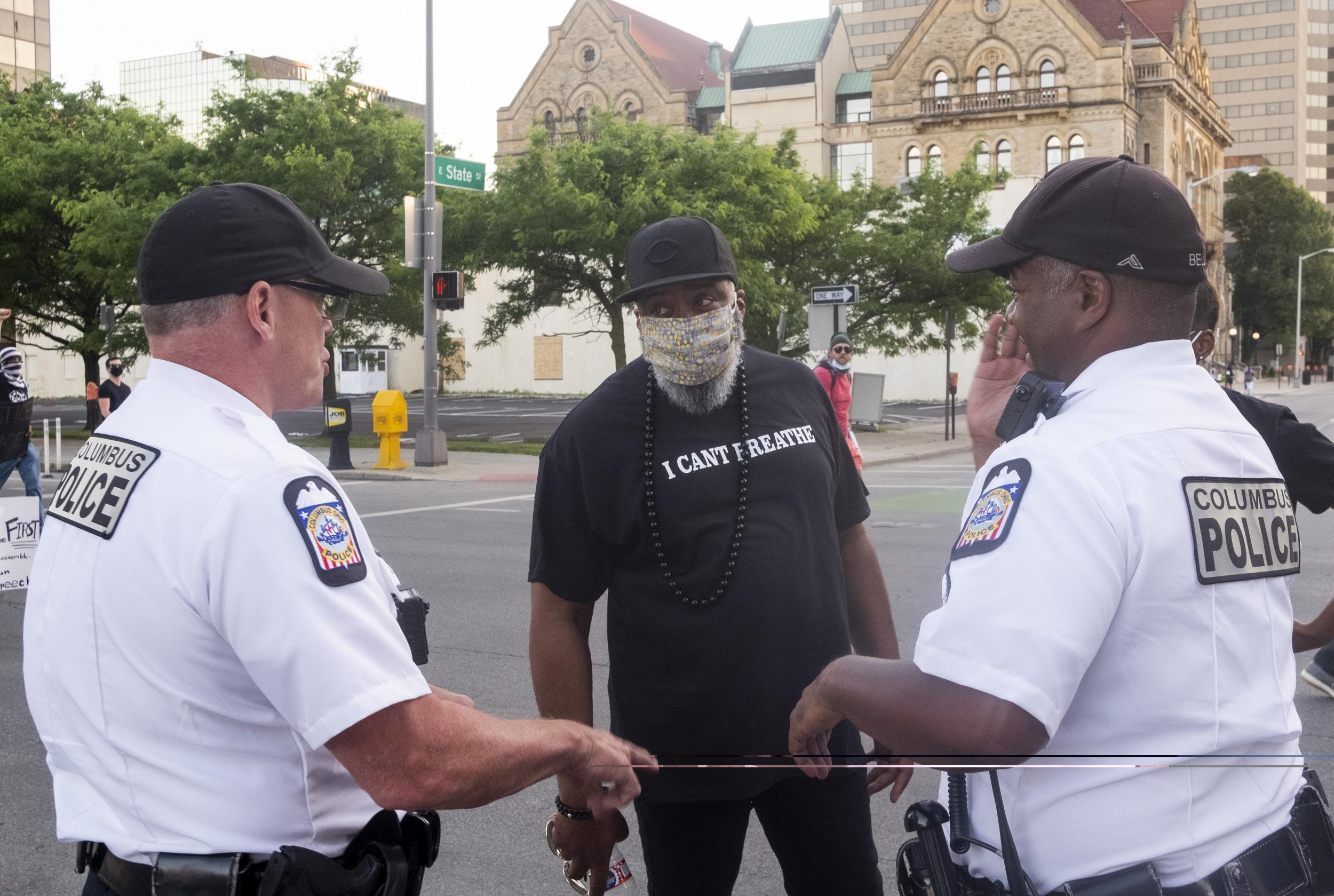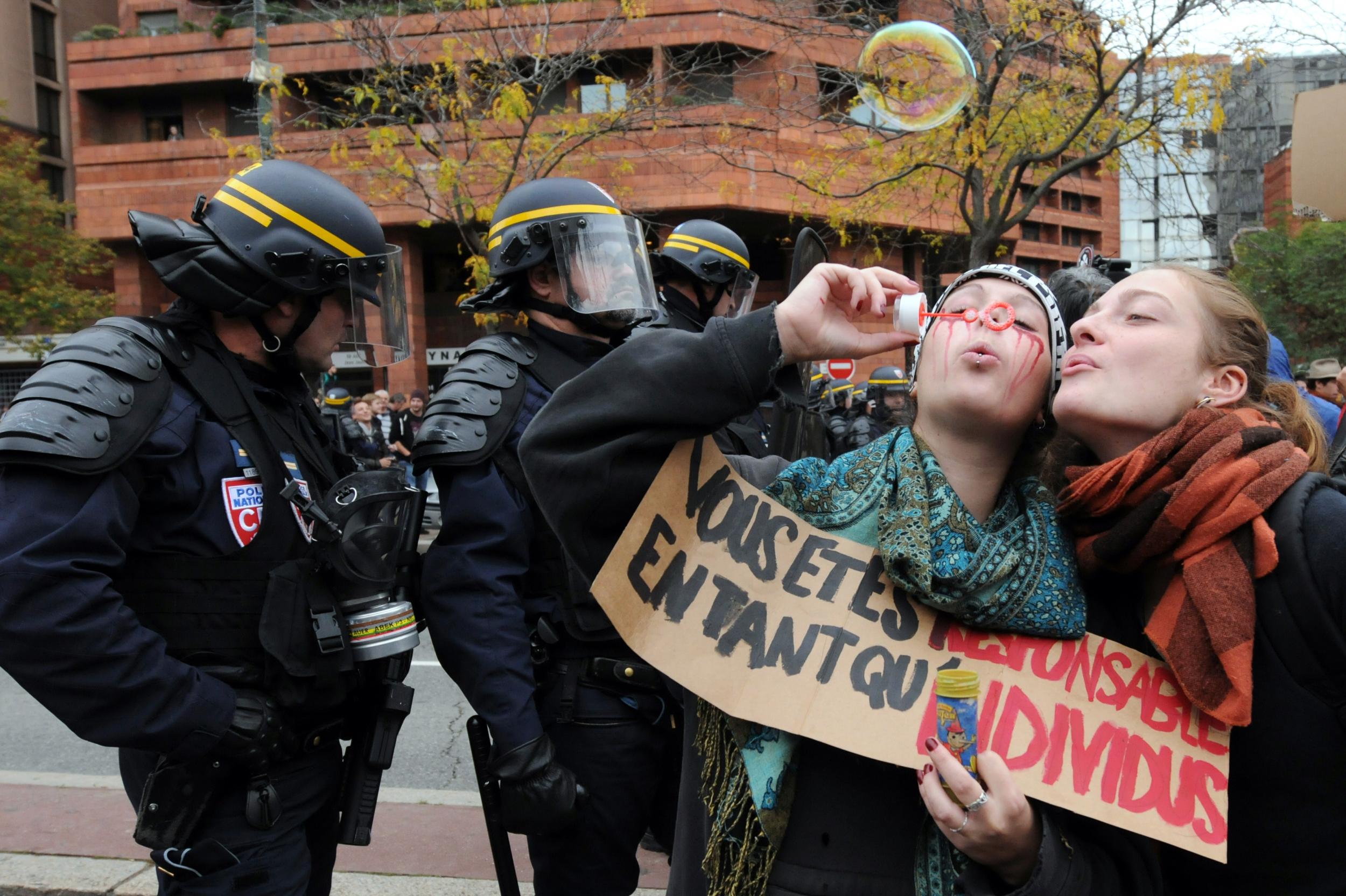From guns to neck restraint: How US police tactics differ to those used in Europe and around the world
US ‘similar to Latin American in terms of vast inequalities, localised policing and highly racialised function,’ says professor
The knee-on-neck restraint used in the death of George Floyd in Minneapolis is banned in most of Europe outside of France. Armed police – such as those who fatally shot Breonna Taylor in her apartment in Louisville, Kentucky, last month – are not part of routine law enforcement in places such as Iceland or Norway. The Minnesota police officer who stopped Philando Castile’s car and fatally shot him in 2016 would have been violating Finland’s strict protocols for the use of deadly force.
In places such as Brazil, Egypt, Kenya – and most recently Hong Kong – accusations of police violence are common and are often seen by rights groups as far less accountable than in the United States.
But in other countries, including many in Europe, the police practices that are causing outrage in the United States are either entirely banned or are far more strictly regulated. Paul Hirschfield, an associate professor of sociology at Rutgers University, said more apt parallels can be drawn between the United States and Latin America.
The United States is “more similar to many Latin American countries in terms of the vast inequalities, localised policing and highly racialized function and history of policing,” he said.
Here’s how five police practices in the United States compare in Europe and elsewhere:
Where don’t police routinely carry guns?
The average police officers in Norway, New Zealand, Iceland, Britain, Ireland and some other nations are not armed. Many of these countries have had high-profile instances of alleged police brutality. But overall, the absence of firearms appears to lessen the level of tension between officers and civilians, opponents of armed police forces argue.
This approach has also worked in at least one nation with a relatively high gun-ownership rate by European standards: Iceland. According to the GunPolicy database, there were an estimated over 30 firearms per 100 civilians in Iceland in 2017, compared to five firearms per 100 people in Britain. (The United States had 120.5 guns per 100 residents in 2017, according to the Small Arms Survey.) Still, Iceland’s police do not routinely carry firearms.
Iceland’s crime rate is far lower than the United States’ – and so is inequality and poverty. In Britain and Ireland – with significantly higher crime rates than Iceland – resistance to equipping police officers with firearms has historically come from inside police forces.
Terrorist attacks in London, Manchester and New Zealand’s Christchurch, among others, in recent years have mounted pressure on some countries to make armed police the standard rather than for special operations. After a gunman killed 51 people in attacks on two mosques in Christchurch in March 2019, New Zealand partially abandoned its approach of having only a select number of senior officers carry firearms. It widened the pool of firearms-carrying officers for a six-month trial period, and a review is now underway.
Norway faced a similar choice between arming and disarming police officers after far-right gunman Anders Behring Breivik killed 77 people in 2011. In 2014, police officers started carrying firearms more frequently following concerns that another attack could be imminent. But around one year later, amid a dropping threat level, the policy was reversed and officers disarmed again.
When can police fire a gun or shoot to kill?
While cops can be armed in most European countries, they have nowhere near America’s level of police killings. Mr Hirschfield, who studies why US police officers kill more people than their European counterparts, found that police shootings in the United States in 2014 were 18 times more lethal than in Denmark and 100 times more deadly than in Finland.

American police are comparatively more heavily armed than Europeans. This is one factor that could lead police to escalate and use deadly force faster, said Mr Hirschfield.
But Mr Hirschfeild said another key factor is the legal framework. The European Convention on Human Rights allows police to use deadly force that is “absolutely necessary”. In contrast, police in the United States are permitted if they have a “reasonable belief” their lives are in danger. Under these differing principles, a police shooting might be lawful in the United States and not according to European standards, said Mr Hirschfeild.
European Union countries set their own regulations within the commission’s framework. Some countries have stricter rules than others. In Finland, for example, a cop is expected to seek a superior’s approval before using deadly force. In Spain, the police officer must first fire a warning shot and shoot at a non-vital part of the body before they can shoot to kill, said Mr Hirschfield, citing his research.
What are the rules around neck restraint?
According to the Minneapolis Police Department’s own rules the day of Floyd’s death, the neck hold, or carotid restraint – in which officer Derek Chauvin pushed his knee onto Floyd’s neck for nearly nine minutes to restrict blood flow – should only be used when the officer fears for their life. Chauvin has been charged with second-degree murder and three other officers are charged with aiding and abetting murder.
In most of Europe, police officers are banned from using these kinds of neck restraints, sometimes also referred to as a chock hold, said Mr Hirschfield. Germany allows police officers to only briefly use a version of it, in which pressure is temporarily applied to the head (and not neck) to subdue somebody. Belgium forbids police from completely leaning on a suspect even temporarily, according to the Associated Press.
One exception is France, where on 28 May officers used it to pin down a black man in an incident captured by bystanders. In Hong Kong, police are also investigating a case in which a man died after police restrained and held him face down during an arrest.
Under international law, “police should only use force as a last resort and to the minimum extent possible” and neck restraints are treated as a serious form of violence, said Patrick Wilcken, a researcher on military, security and policing issues with London-based Amnesty International.
How does U.S. police training compare to Europe?
A police officer in the United States trains for an average of 19 months before being put on the job. In much of Europe, it’s three years.

The knee-on-neck restraint used in the death of George Floyd in Minneapolis is banned in most of Europe outside of France. Armed police – such as those who fatally shot Breonna Taylor in her apartment in Louisville, last month – are not part of routine law enforcement in places such as Iceland or Norway. The Minnesota police officer who stopped Philando Castile’s car and fatally shot him in 2016 would have been violating Finland’s strict protocols for the use of deadly force.
“Training is a much more lengthy process in countries with national policing,” said Mr Hirschfield. “You can impose national standards much more easily, and enforce them much more easily.”
“In these more politicised contexts, local structures are the ones that decide about policing,” said Mr Hirschfield. “The mayors and city counsels are in charge of regulating police ... in some places, the police exert a lot of influence on the policy process.”
He added: “Any time they try to adopt a reform ... the cost is directly on the police force, [as] there’s no national police force paying. That makes it harder to reform.”
Some US police leaders have also sought to learn from other nations. Following a spate of fatal police killings of black men and the Ferguson protests in 2014, a group of police leaders sought advice from European counterparts on how to better avoid deadly force. Israeli police have partnered with US officers to provide training in anti-terror tactics, a relationship human rights groups have criticised.
Where is de-escalation a greater police priority?
In many European countries, training may focus on how to use space and time to reduce a threat, as well as less-risky weapons such as tasers. In Japan, police officers are discouraged from using firearms; instead, they are trained in a form of martial arts called taiho-jutsu to wield if necessary.
In the United States, in contrast, crisis intervention and de-escalation “tends to be an afterthought and sometimes just a day” in US police training, said Mr Hirschfield. “If officers have time and there’s an investment in training, they could be trained in nonlethal ways of subduing people ... [such as] pressure points or pain compliance techniques that are effective in subduing people with a very low risk of harm. ”
Police use of tear gas, rubber bullets, and other aggressive tactics against demonstrators over the past week have shocked many analysts and reporters, particularly those who’ve covered protests and revolts in other countries.
“Compared to some Middle Eastern countries, China, Russia, Turkey, our police are hopefully not as aggressive towards citizens,” said University of Arizona professor Jennifer Earl, who studies police and protests. But Us police are “much more militarised than [other] western countries,” she continued. “We do on average have more aggressive policing than our peers.”
The Washington Post
Join our commenting forum
Join thought-provoking conversations, follow other Independent readers and see their replies
Comments